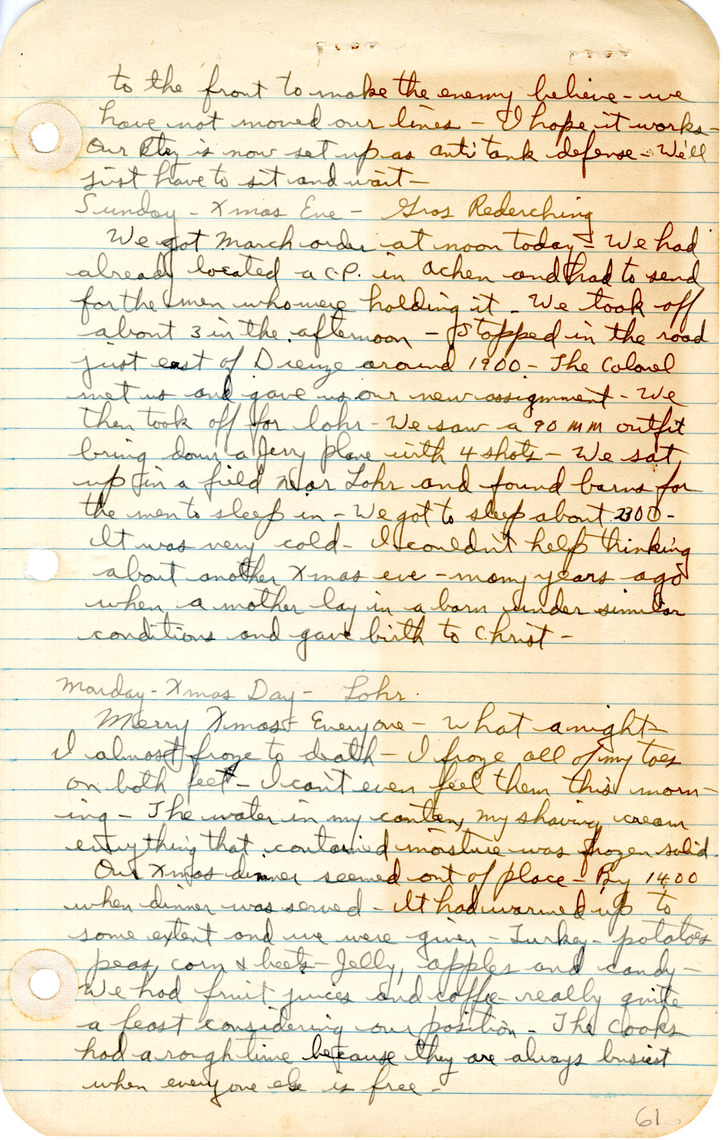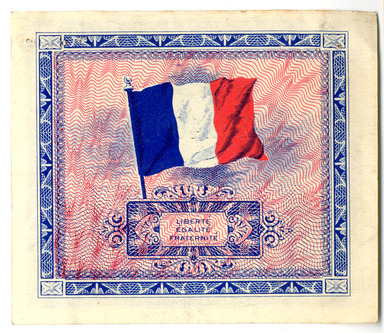[Continued from previous page] the front to make the enemy believe we have not moved our lines. I hope it works. Our Btry. is now set up as anti tank defense. We’ll just have to sit and wait.
Sunday – Xmas Eve [1944] Gros Rederching
We got march order at noon today. We had already located a C.P. in Achen and had to send for the men who were holding it.1Aachen, the westernmost city in Germany located in North Rhine-Westphalia near the border with Belgium and the Netherlands, was captured from the Germans after two weeks of bitter fighting in October, 1944. We took off about 3 in the afternoon. Stopped in the road just east of Dienze around 1900. The Colonel met us and gave us our new assignment. We then took off for Lohr.2Lohr was a small village located in the Alsace region of France. We saw a 90mm outfit bring down a Jerry plane with 4 shots. We set up in a field near Lohr and found barns for the men to sleep in. We got to sleep about 2300. It was very cold. I couldn’t help thinking about another Xmas eve – many years ago – when a mother lay in a barn under similar conditions and gave birth to Christ.
Monday – Xmas Day [1944] Lohr
Merry Xmas, Everyone. What a night. I almost froze to death. I froze all of my toes on both feet. I can’t even feel them this morning. The water in my canteen, my shaving cream- everything that contained moisture was frozen solid. Our Xmas dinner seemed out of place. By 1400 when dinner was served- It had warmed up to some extent and we were given: turkey, potatoes, peas, corn, beets, jelly, apples, and candy. We had fruit juices and coffee, really quite a feast considering our position. The cooks had a rough time because they are always busiest when everyone else is free.


